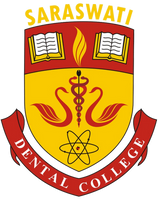Treatment can be divided into non invasive, minimally invasive and invasive modalities. Temporo mandibular joint replacement is reserved for severely damaged joints with end stage disease that has failed all other conservative modalities.
In many cases, the actual cause of this disorder may not be clear. Sometimes the main cause is excessive strain on the jaw joints and the muscle group that controls chewing, swallowing, and speech. This strain may be a result of bruxism. This is the habitual, involuntary clenching or grinding of the teeth. But trauma to the jaw, the head, or the neck may cause TMD. Arthritis and displacement of the jaw joint disks can also cause TMD pain. In other cases, another painful medical condition such as fibromyalgia or irritable bowel syndrome may overlap with or worsen the pain of TMD. A recent study by the National Institute of Dental and Craniofacial Research identified clinical, psychological, sensory, genetic, and nervous system factors that may put a person at higher risk of developing chronic TMD.
The following are the most common signs and symptoms of TMD:
Jaw discomfort or soreness (often most prevalent in the morning or late afternoon)
Headaches
Pain spreading behind the eyes, in the face, shoulder, neck, and/or back
Earaches or ringing in the ears (not caused by an infection of the inner ear canal)
Clicking or popping of the jaw
Locking of the jaw
Limited mouth motions
Clenching or grinding of the teeth
Dizziness
Sensitivity of the teeth without the presence of an oral health disease
Numbness or tingling sensation in the fingers
A change in the way the upper and lower teeth fit together
TM disorders have a vast scope of research and the department is keen to explore better treatment options for the same. Literature suggests blood coagulum, hynidase, dexamethasone as many injectables for the treatment of TMDs. In the department we have also used and compared injectable PRF with other injectables and found it to yield comparable results or even better results in some cases.




